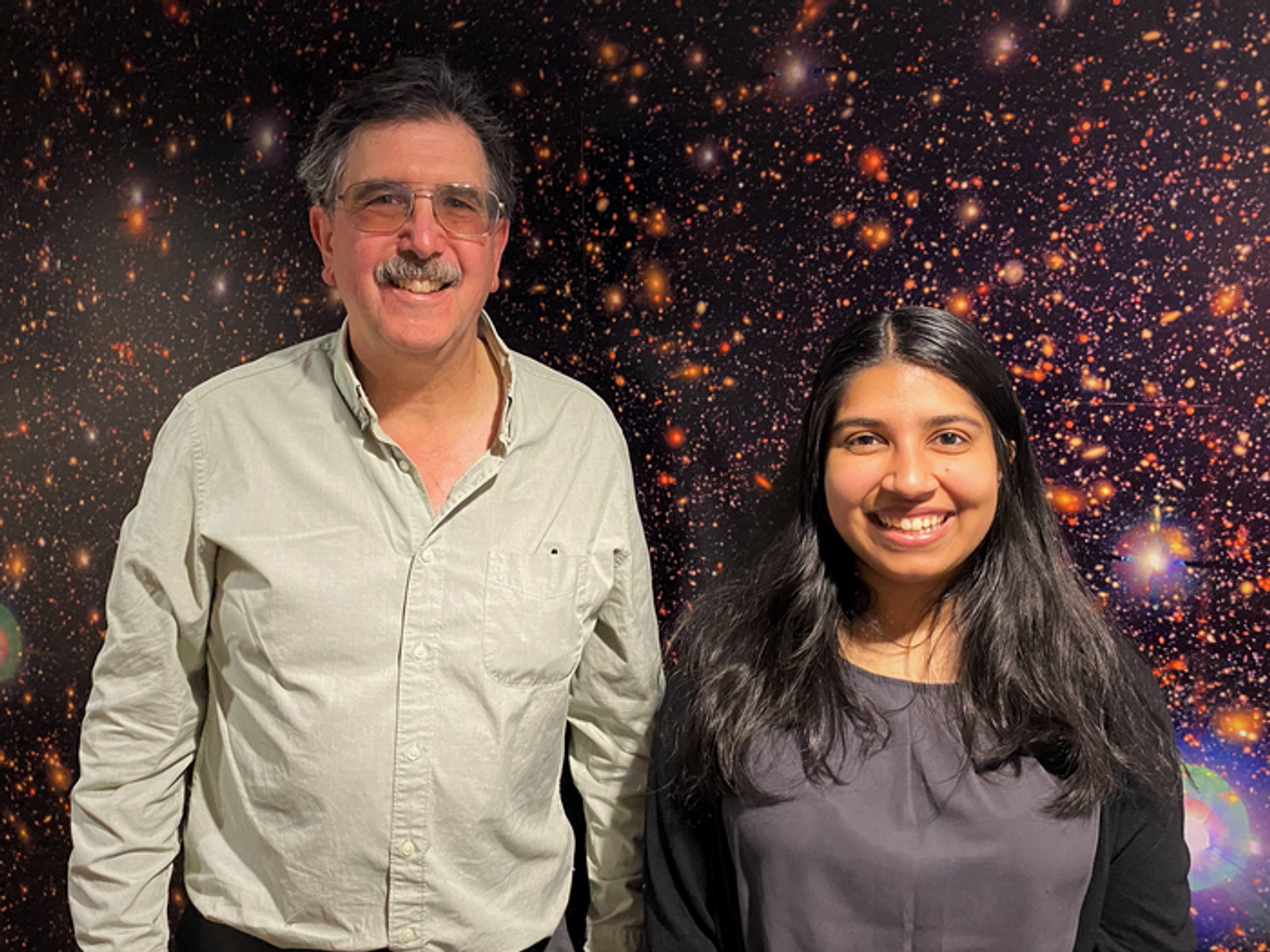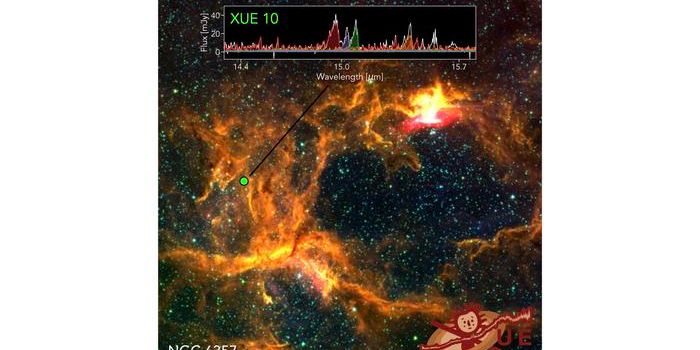Dark Matter "Clumpiness" Could Revise Models of the Mysterious Substance
An international team of researchers used a recent webinar to present computer simulation findings on dark matter which could help scientists better understand this mysterious and literally invisible substance. The study is the culmination of three years of observations by the Hyper Suprime-Cam (HSC) that was mounted on the Subaru telescope in Hawaii and was operated by the National Astronomical Observatory in Japan.
Princeton astrophysicist Michael Strauss and Princeton graduate student Roohi Dalal. (Credit: Stephanie N. Reif, Princeton University)
“Our overall goal is to measure some of the most fundamental properties of our universe,” said Roohi Dalal, a graduate student in astrophysics at Princeton. “We know that dark energy and dark matter make up 95% of our universe, but we understand very little about what they actually are and how they’ve evolved over the history of the universe. Clumps of dark matter distort the light of distant galaxies through weak gravitational lensing, a phenomenon predicted by Einstein’s General Theory of Relativity. This distortion is a really, really small effect; the shape of a single galaxy is distorted by an imperceptible amount. But when we make that measurement for 25 million galaxies, we’re able to measure the distortion with quite high precision.”
While much is unknown about dark matter, scientists hypothesize that it's responsible for keeping the universe together. It is also estimated that dark matter comprises approximately 27 percent of the universe while another mysterious substance known as dark energy makes up approximately 68 percent. Contrary to the purpose of dark matter, dark energy is hypothesized to be responsible for the exapnsion of the universe. The remaining roughly 5 percent of the universe is comprised of ordinary matter that we can visibly see, to include the stars, planets, galaxies, and us.
The study’s findings indicate a measured dark matter “clumpiness”, also known as Sg, of 0.776. While this value agrees with studies involving gravitational lensing and the recent universe, this value does not agree with a previous value derived from the Cosmic Microwave Background, which is comprised of the early universe, of 0.83.
While the difference between the two values is only 0.054, as additional studies confirm both values, there doesn’t appear to be a coincidence with their differences. This leaves two possibilities: 1) a mathematical mistake or unrealized error in either value, or 2) the standard cosmological model is incomplete in a unique way.
“We’re still being fairly cautious here,” said Michael Strauss, chair of Princeton’s Department of Astrophysical Sciences and one of the leaders of the HSC team. “We’re not saying that we’ve just discovered that modern cosmology is all wrong, because, as Roohi has emphasized, the effect that we’re measuring is a very subtle one. Now, we think we’ve done the measurement right. And the statistics show that there’s only a one in 20 chance that it’s just due to chance, which is compelling but not completely definitive. But as we in the astronomy community come to the same conclusion over multiple experiments, as we keep on doing these measurements, perhaps we’re finding that it’s real.”
What new discoveries will scientists make about dark matter in the coming years and decades? Only time will tell, and this is why we science!
Sources: YouTube, Princeton University, NASA
As always, keep doing science & keep looking up!









